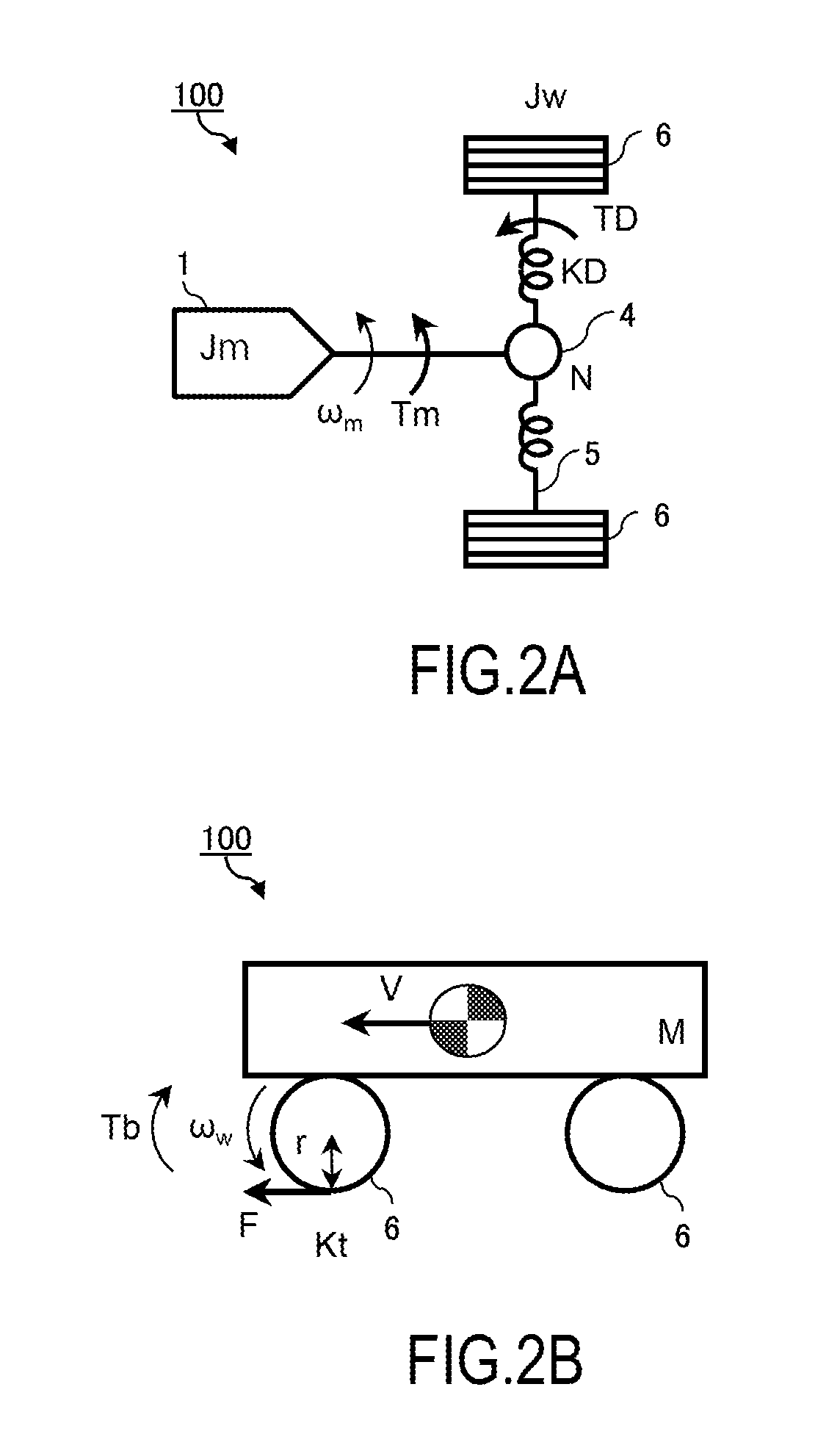Control device for electric vehicle and control method for electric vehicle
a technology for electric vehicles and control devices, which is applied in the direction of braking systems, battery/fuel cell control arrangements, braking components, etc., can solve the problems of excessive battery charge and electric vehicle cannot be smoothly stopped
- Summary
- Abstract
- Description
- Claims
- Application Information
AI Technical Summary
Benefits of technology
Problems solved by technology
Method used
Image
Examples
first embodiment
[0029]FIG. 1 is a schematic configuration diagram of an electric vehicle 100 that includes a motor controller 14 as a control device according to the first embodiment.
[0030]The electric vehicle 100 includes a motor 1 as a part of or the entire driving source. In this embodiment, it is assumed that the motor 1 mounted to the electric vehicle 100 operates in three-phases (U, V, and W phases). It should be noted that the electric vehicle 100 may be an electric vehicle that uses an electric motor as a driving source and a hybrid vehicle that uses an electric motor and an engine as driving sources.
[0031]The electric vehicle 100 according to the embodiment can perform acceleration and deceleration and stop only by operating an accelerator pedal. That is, a driving torque and a regenerative torque generated by the motor 1 are determined according to an opening degree of the accelerator pedal. Therefore, an increase in the opening degree of the accelerator pedal increases the driving torque...
second embodiment
[0225]The following describes a control device of a second embodiment. This embodiment describes a case where a timing that the braking method switches from the friction braking to the regenerative braking is different from that in the first embodiment.
[0226]FIG. 15 is a configuration diagram of an electric vehicle 100 including a motor controller 14 as the control device of the second embodiment.
[0227]With reference to FIG. 15, the electric vehicle 100 of the second embodiment is different from the electric vehicle 100 of the first embodiment illustrated in FIG. 1, in that the regenerable electric power Pin is not output from the battery controller 13 to the motor controller 14.
[0228]The motor controller 14 preliminarily stores an SOC specified value (SOC0) used for obtaining a switching timing between the friction braking and the regenerative braking. It should be noted that the SOC specified value (SOC0) can be obtained as follows.
[0229]First, a charging electric energy of the ba...
third embodiment
[0265]Next, a description will be given of the electric vehicle 100 that includes a control device of a third embodiment. In the second embodiment, as the specified charging electric energy Ws0, a regenerative electric energy generated between a time point at which the electric vehicle 100 becomes in the state of just before stop of the vehicle and a time point at which the vehicle stops is preliminarily predicted. In this embodiment, a description will be given of an example where the charging electric energy Ws is predicted corresponding to a running state of the electric vehicle 100.
[0266]The electric vehicle 100 of the third embodiment has a configuration identical to the configuration of the electric vehicle 100 of the first embodiment illustrated in FIG. 1. Then, the explanation of the configuration will be omitted.
[0267]When this embodiment is compared with the first embodiment, the processes illustrated in FIG. 3, FIG. 5, FIG. 6, and FIG. 7 are identical, and the command val...
PUM
 Login to View More
Login to View More Abstract
Description
Claims
Application Information
 Login to View More
Login to View More - R&D
- Intellectual Property
- Life Sciences
- Materials
- Tech Scout
- Unparalleled Data Quality
- Higher Quality Content
- 60% Fewer Hallucinations
Browse by: Latest US Patents, China's latest patents, Technical Efficacy Thesaurus, Application Domain, Technology Topic, Popular Technical Reports.
© 2025 PatSnap. All rights reserved.Legal|Privacy policy|Modern Slavery Act Transparency Statement|Sitemap|About US| Contact US: help@patsnap.com



